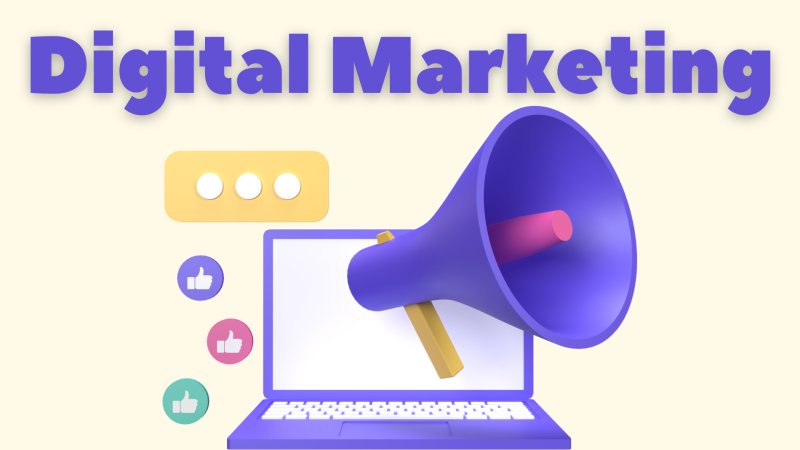
Which type of digital marketing is best? 8 benefits of digital marketing for business
Digital marketing is a successful way to achieve meaningful business results. But to achieve it, you need to understand what it is, how it works, and what types of digital marketing you can use.
If you want to increase your traffic, attract more customers, increase brand awareness, and attract a loyal audience, it's important to understand the differences between the different types of digital marketing and determine which tool you need to achieve these goals.
In this article, we'll try to help you learn more about this topic. Here you'll see each of the most effective types of digital marketing, their benefits and goals, and when and how to use each.
So, keep reading, and let's expand our knowledge!
What is digital marketing?
Digital marketing is the process of marketing products or services to potential customers through digital channels and the internet.
Companies use different types of digital marketing, such as search engine optimization (SEO), social media marketing (SMM), email marketing, content creation and more, to promote their brand to potential customers or retain their customers.
Types of digital marketing.
1. Content Marketing
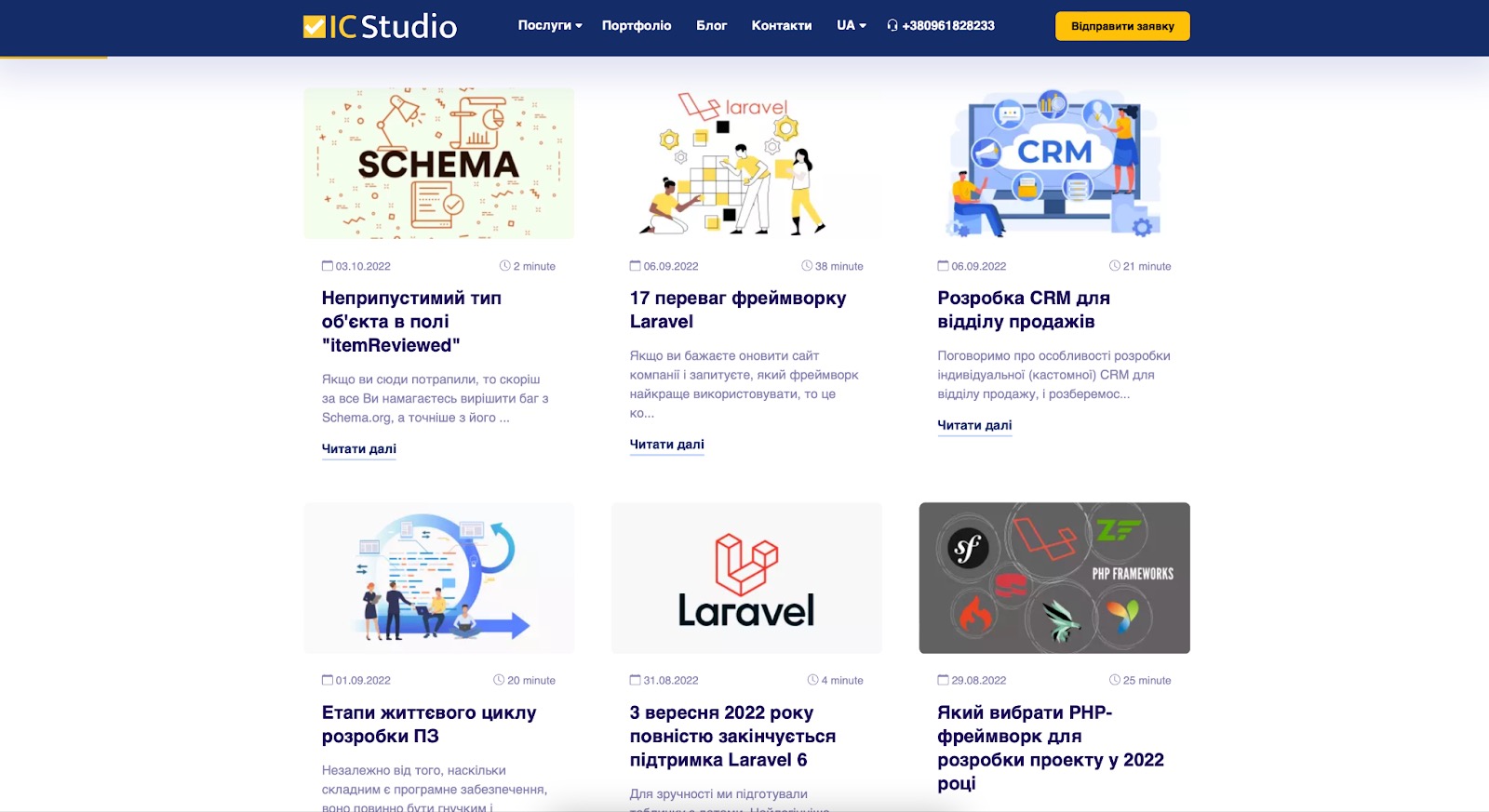
Consumers are hungry for information on how to solve their problems or fulfill their desires. And if your brand gives them that through quality and useful content, you'll gain their trust.
That way, your company will gain credibility in the marketplace and become the customer's choice when they need to make a decision.
And content marketing is just about that.
This method involves giving your audience answers to their questions by publishing useful content. This can be done on blogs, social media, email or other channels.
Each channel may require a different format. Goals can be achieved through different types of content, such as blog posts, ebooks, infographics, videos, quizzes, templates, data sheets, and so on.
Content marketing focuses on the funnel, which also affects the type of content used. For example, at the top of the funnel, content needs to be more general, such as complete guides. At the bottom, more specific content is needed, such as testimonials and demos.
Given these parameters - channel, format and type - you can choose the best content that will lead your buyer to what you expect from your marketing campaign.
Content marketing can be used for a variety of purposes. But the most common one is to convert visitors into leads who will be more interested in your products or services.
2. SEO (search engine optimization).
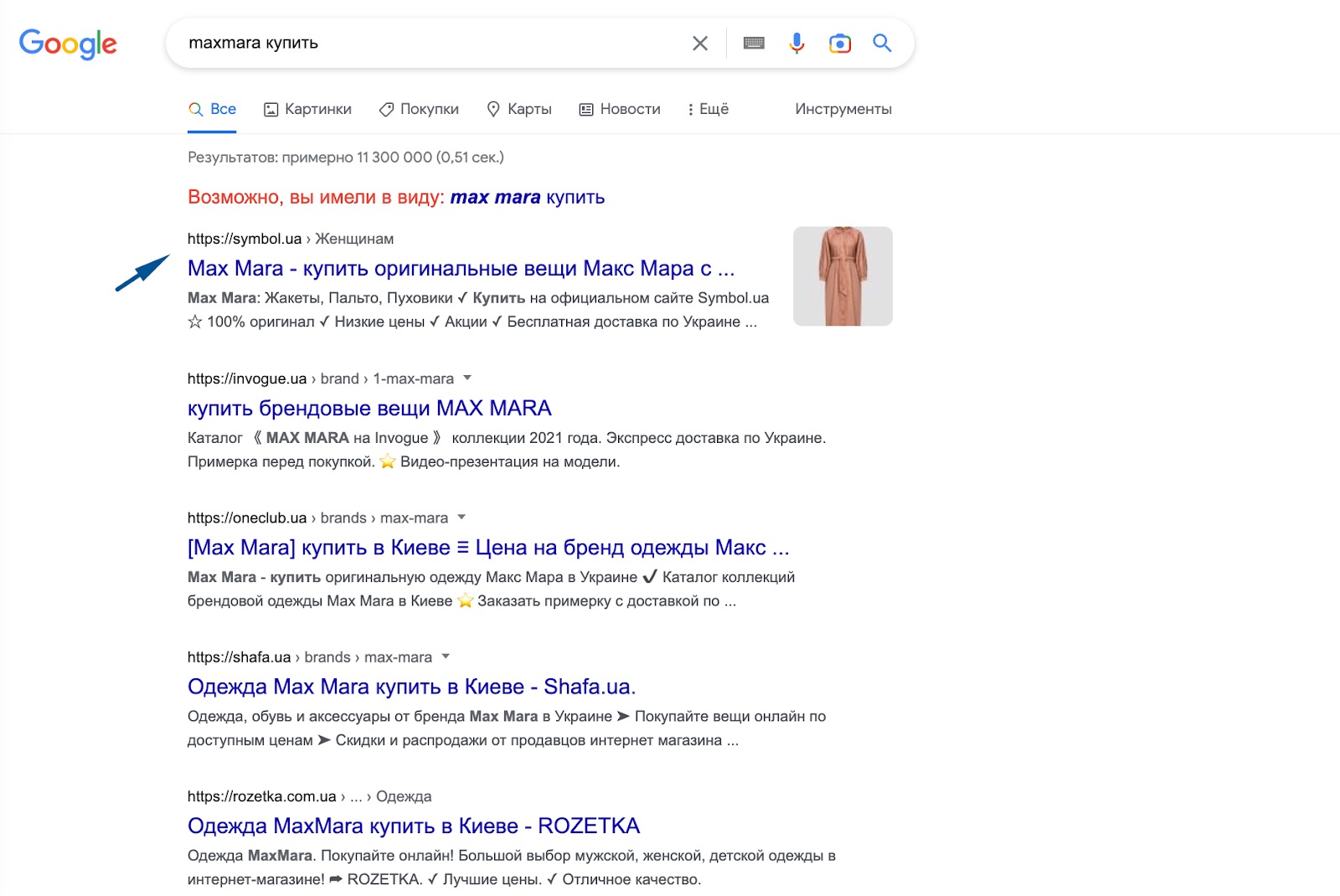
When you start producing content in your company, your audience should be able to find it.
According to Search Engine Journal, 91.5% of web traffic comes from sites listed on the first page of Google. And 51% of all website traffic comes from organic search. Organic traffic is what you get when you search on Google without clicking on ads.
As you can see, SEO cannot be ignored.
SEO (or search engine optimization) allows your content to rank at the top of the search engines. That way, your site will be found by someone who is actively searching for what you offer. SEO includes internal and external optimization.
Internal optimization involves generating a sitemap so that robots that crawl the site can get to the right pages. At this stage, prescribed meta tags, so your site will be correctly displayed in search results.
At the stage of external optimization is collected semantic kernel, which consists of keywords that your customers are looking for products or services on the Internet. Next, these keys are organically fit into the content of the site and create relevant articles on the blog. External links are purchased, in order to increase the importance of the site in the "eyes" of the search robot.
The first results of SEO optimization are visible after a couple of months. Moreover, in SEO, you do not have to pay for each click on your website, like in contextual and targeting advertising, or worry that your content will not be found, like in contextual marketing.
3. SMM (social media marketing)
SMM or social media marketing is, as the name implies, a method that uses social media to promote a brand, product or content.
You can publish your content on social media or create ads and pay to reach a specific audience. In both cases, the most important thing is to choose the more appropriate social network for your, brand, product/service or content.
Some of the best benefits of social media marketing include the opportunity to get closer to your audience and the potential for interaction. You can also use your social media as a channel to communicate directly with your audience. That's why it's so important to constantly update and monitor them.
4. Paid advertising (Google Contextual Media Network)
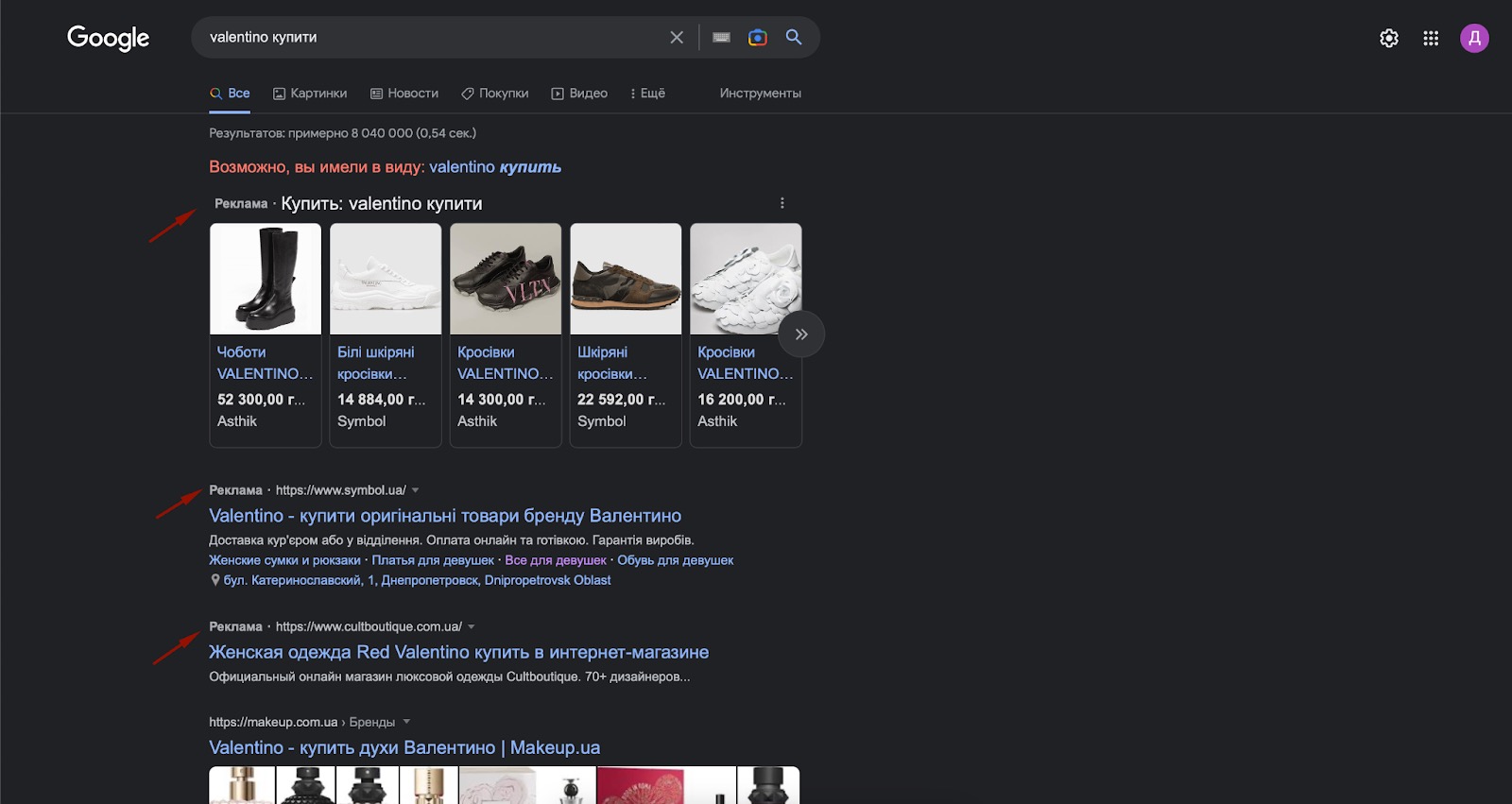
There are several ways to pay for media online. You can advertise on social media as well as search engines like Google.
Paid ads for search engines appear at the top of search results before organic results. They always come with an "Ads" prompt.
This type of digital marketing can have different payment models. The most common is PPC or pay per click: this is the most commonly used media payment model online, and it can be used in almost all digital marketing strategies. As the name implies, you buy clicks on your ad, usually through a bid on a keyword auction.
5. Email Marketing

Lots of emails are sent every day, and some people still say email marketing is dead. In fact, it's one of the most effective types of digital marketing. If you use it strategically, you can achieve significant results.
One way to achieve this is to keep subscribers updated with useful and relevant content. Promoting products and services is also an effective strategy if you respect your audience's privacy and don't spam.
In addition, email is also a direct channel for communicating with your customers and engaging them with the company.
6. SMS marketing

The use of instant messaging apps is growing. Aside from WhatsApp, almost all social media platforms have direct messaging, and this is a fantastic opportunity for marketing strategies.
When your customers need support, they can reach out through these channels to get a quick response, which will have a very positive impact on your brand and the relationship between it and your customers.
According to Statista, more than 1.6 billion people used WhatsApp in 2019, a testament to the power and reach of this particular channel.
Thus, you can't ignore this type of digital marketing. If you want to be accessible to your customers, you should implement an instant messaging strategy.
7. Affiliate marketing.
In affiliate marketing, content producers receive a commission for every conversion they receive for a product or service. In fact, these content producers work as a sales force for your business. They create their own relevant and original content and mention or praise your service/product using a link to your website. If their audience clicks to buy, you pay them for each sale.
The best advantage of affiliate marketing is that you don't need to have a large audience because you will reach an audience created by affiliates.
As with social media marketing, you should choose affiliates whose audience could potentially be interested in your products or services.
8. Influence marketing


This type of marketing allows you to sell your services or products through "opinion leaders." Opinion leaders can be companies or individuals who show their expertise in a particular niche to a large interested audience. Opinion leaders can create content for your brand and broadcast it to their audience to attract you customers.
The main challenge of this type of marketing is finding the right opinion leader. His or her audience must be similar to your target audience, and he or she must be close to the niche in which you sell your products or services.
More and more brands are using Influence marketing in their strategies and getting good results.
9. Mobile Marketing

A Google study shows that 27% of the world's population uses voice search on mobile devices, and the consumer journey is becoming increasingly complex.
This research also shows that responsiveness is just as important as loyalty. And there's nothing more urgent than solving a smartphone problem anywhere, anytime.
Nowadays, mobile marketing is almost mandatory if you want to attract customers. This type of marketing allows you to always be in touch with your customers.
Mobile marketing is not just a trend. It should become a reality for brands that want to always be there for their customers.
Here are some mobile marketing strategies:
-
Mobile apps. Mobile apps are convenient because they're always at your fingertips on your smartphone's home screen. And it's much easier to keep customers up to date with company news, just send push notifications when you want to talk to your audience;
-
SMS marketing. Be available to your customers at all times. If they want to know information about the company, products or services, they need to do it quickly and conveniently. And this is where messenger marketing comes in.
-
Set up geo. Whether it's geolocating on social media or matching keys in SEO to your CA's location, you need to be where your customers are.
-
Offer mobile content. Emphasize the mobile version of the site; it should be user-friendly and fast.
10. Video Marketing
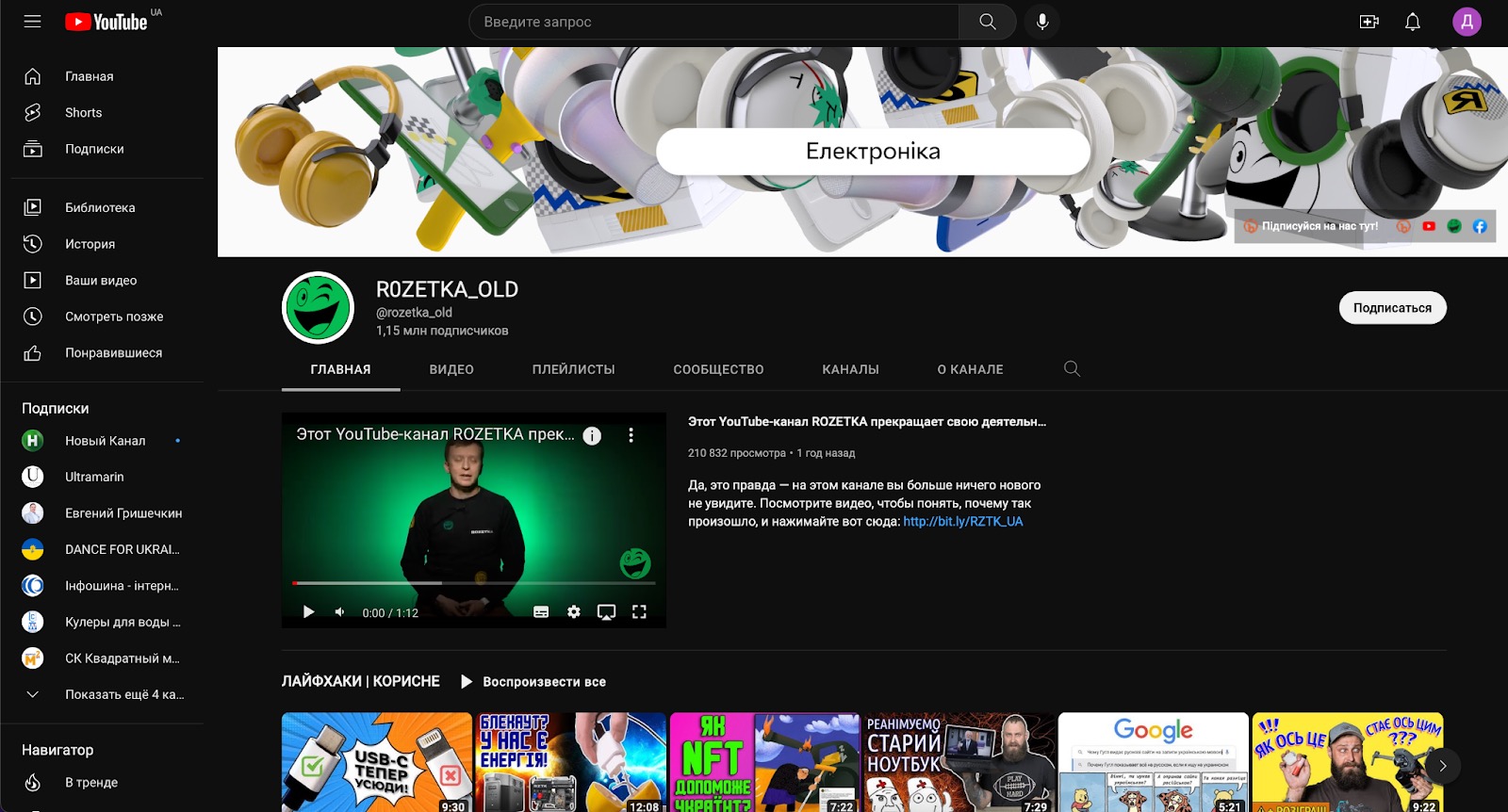
Every month 2 billion people search for something on YouTube .Entertainment, news, how-to's, content to learn, whatever, this is a great opportunity to attract new customers.
Video marketing strategies are used to get results throughout the marketing funnel, as well as blog posts and emails.
People search for videos for several reasons, such as to see credible reviews of certain products or services.
80% of people alternately use search engines and videos, and use them to learn more about products and see how others have used them. And 55% of consumers do this before making a purchase.
As you can see, this is a good opportunity to facilitate sales.
11. Audio marketing.
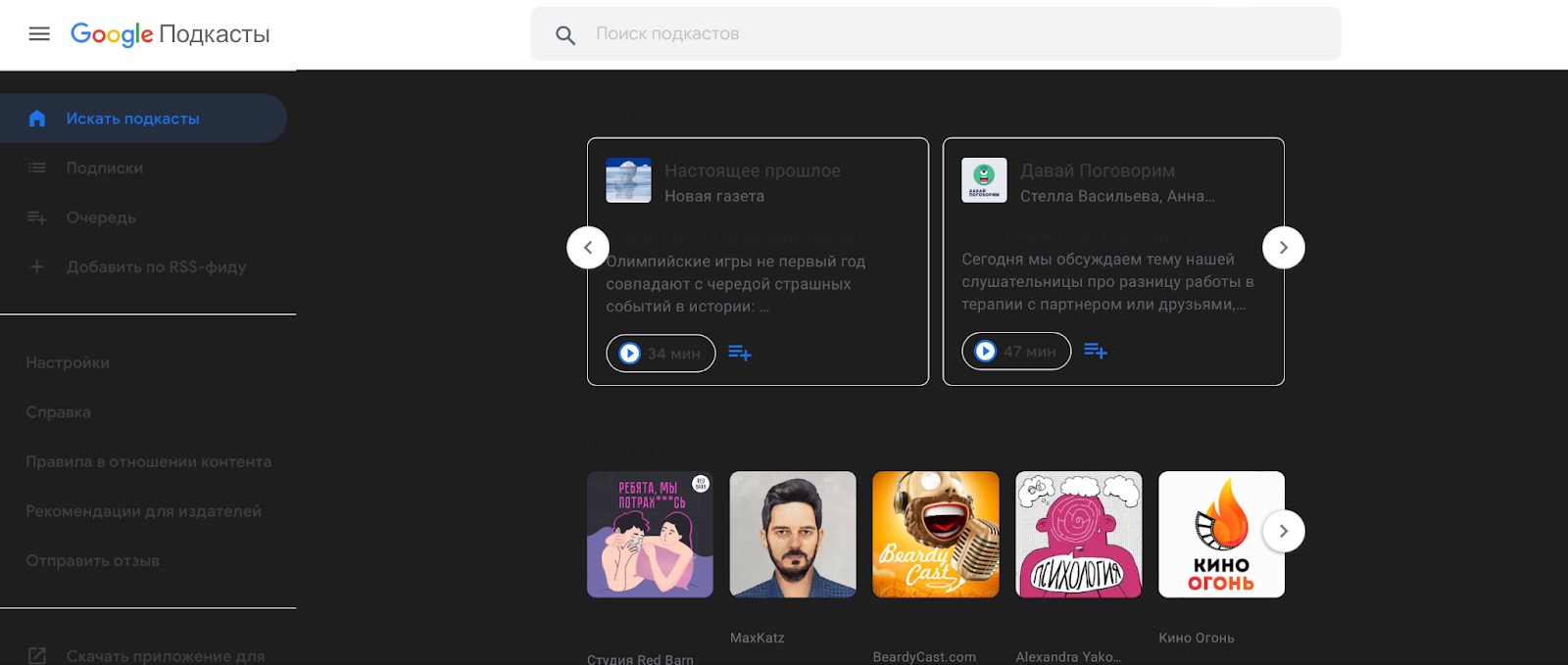
In the age of mobile devices, audio marketing deserves some attention from marketers. Even if audio doesn't have the same momentum, formats like podcasts are being consumed more and more. Indeed, podcasts are authentic, and they capture radio audiences, especially when people are on the go or doing something mechanical.
If you know your target's habits, you can think about topics for your podcasts that have something to do with the actions your audience can do while listening to them. That way, you can put your product or service into context and turn audio marketing into a big sales opportunity.
12. Virtual reality marketing
VR or virtual reality has already entered our lives and can be used by marketers to engage a brand's audience. It provides an opportunity to give your audience an immersive experience with a brand, product or service.
The impact of this type of communication on people is almost unforgettable, and it separates your brand from others in the same market segment.
While still innovative, virtual reality marketing connects your brand with a modern idea and puts your business in an innovative position ahead of your time.
We've figured out what digital marketing is and what types there are. Now let's talk about what we get out of it. Next, we'll look at the 8 main benefits of digital marketing, such as:
-
Reaching a global audience
-
Marketing to a niche audience
-
Increased ROI
-
Trackable and measurable results
-
Increased social currency
-
Interactive marketing
-
Improved conversion rates
-
Win customer loyalty
Top 8 benefits of using digital marketing for your business:
1. Reaching a global audience.
One of the biggest benefits of digital marketing is that it has eliminated all sorts of geographical barriers.
You can open your doors to foreign countries and offer your services to customers who live miles away. You can sell to them with the click of a mouse and inform people who otherwise wouldn't know you existed.
While we know that a global audience is a very large number, this problem can be solved with the following advantage of digital marketing.
2. Marketing to a niche audience
Niche targeting means targeting only those people who fit your criteria. You can do this with digital marketing. When you advertise on digital platforms, you can filter your audience by qualities that match your target audience and then run ads.
For example, you can filter the location as Ukraine, then filter them by demographics, and by all sorts of interests from favorite car brand to taste preferences. And you can target specific regions, separately for Kiev, Kharkov, etc.
3. Increase of return on investment
We believe that this is the biggest advantage of digital marketing. Due to the wide reach offered by digital marketing, the costs are relatively affordable and not burdensome. The investment in digital marketing is significantly less than traditional marketing, sometimes even close to 0.
Consequently, the return on investment in digital marketing is much higher than in traditional marketing. This also allows small businesses and startups to make optimal use of digital marketing without causing a serious strain on their budgets.
4. Traceable and measurable results
In our opinion, any company strategy is a waste of time if you can't measure your effectiveness. Basically, it means making efforts blindly.
Writing a strong strategy and implementing it is only half the battle. The ultimate goal is to track your performance, measure success/failure, and take corrective action.
With platforms like Google Analytics and Google Search Console, you can track the performance of your digital marketing campaigns from start to finish.
You decide what works best for you and keep using those strategies.
5. Improved conversion rates
As we saw above, with performance tracking we can assess where our maximum sales are coming from and target consumers accordingly.
So this simply means higher conversion rates because we are investing where there is demand for us.
In traditional marketing, it's difficult or even impossible to figure out where a lead has been converted from, and thus you may be wasting your time on the wrong leads.
But with digital marketing, this can be solved by targeting a similar audience that converts the most leads.
6. Increasing social currency.
Social currency is ultimately your presence on digital platforms. It's sort of your digital footprint. With digital marketing, you can continually increase your social currency, which means your online presence gets bigger and stronger.
Why is it beneficial? When everyone is present online, the more visible you are to people, the greater the chances that your business will get noticed. Which will finally bring in more sales.
Like the accumulation of wealth or currency, the accumulation of your social currency doesn't happen overnight. With consistent effort, increasing your social currency will lead to repeat sales, and it will take less effort to attract new customers and the loyalty of loyal ones.
7. Interactive Marketing.
Digital marketing is a two-way interaction. Brands interact with their target audience to show their uniqueness through various digital marketing campaigns. In turn, customers interact, engage and show interest in that particular brand. This advantage of digital marketing is rarely seen in traditional methods. Both brands and customers are aware of their interaction with each other.
No potential brand can know exactly how many eyes its billboard has attracted, and if so, how many are actually interested in its product/service. Likewise, customers with short attention spans rarely pay attention to the details on the billboard and turn to the brand later.
8. Better customer service
Winning customer loyalty is the ultimate win for a company. With digital media, it's easier to reach customers who are interested or have complaints about your brand.
For those who are interested or inquiring about your product/service, you can use remarketing techniques or provide them with coupon codes to convert them into sales.
In addition, companies use chatbots to interact with interested customers around the clock and answer basic questions so they don't switch to competitors in their absence.
All of these things combine to help build a good reputation around your company for customers, which will ultimately lead to repeat sales.
Conclusion
Digital marketing is now a must for building a successful modern business. The many benefits of digital marketing can improve your business according to your goal, whether it's increased sales and leads or brand awareness.
Digital channels will continue to expand their audience, and you need to know where to market your business most effectively. By understanding what lies ahead in the digital and online transformation, companies that take advantage of a growing online audience will be well ahead of their competitors. Marketing through online channels has empowered many companies to compete where it would have been harder and more expensive before.
In today's business environment, small and large businesses compete on more equal terms. On the contrary, others have more opportunities at much higher budgets, but that doesn't mean they've won the competition. It all comes down to how well the strategy will be implemented in each unique situation.
As you saw by reading this article about different types of digital marketing, there are several ways to increase your lead base and therefore improve your sales. So if you want the best results, you should apply one or more of them in your digital marketing plan as soon as possible.
And if you're looking for new ways to get even more customers into your business, we'd love to help!